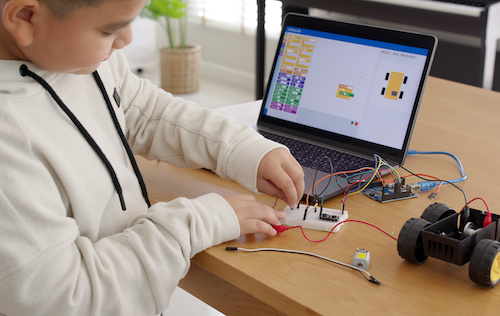Key points:
- Engineering doesn’t have to be intimidating
- Engineering helps students learn the mechanics of their world
Engineering is arguably one of the most useful and relevant subjects in our schools today. Its impact on our world cannot be overstated. Engineers are the ones who help humanity reach the moon, explore the depths of the ocean, assist in the treatment of serious illnesses, and even design many of the games our students play.
Unfortunately, engineering can often feel like a separate unit or idea that teachers need to explain. With many of today’s educators already feeling overwhelmed with the responsibilities of teaching, finding ways to seamlessly integrate engineering into the curriculum is essential for both teacher and student success.
Engineering is all about creating and practicing solutions to human problems. It can branch into chemistry, biology, and all fields of science. So, what does that look like in the classroom?
Here are just a few strategies that teachers can use to build engineering into their classroom curriculum:
1. Start Simple: Engineering doesn’t have to be complex to challenge student creativity and critical thinking. Simple activities such as building a glider out of paper and plastic straws or designing ways for a plastic diver to stay afloat in a pool of water can do much to spark student imagination. They are also a good method for promoting soft engineering skills like collaboration and communication.
2. Engineer with a “Hook”: To make content meaningful, students benefit from personal experiences to help “hang” their newfound knowledge on. Use an engineering challenge to create a class-wide experience that all students can relate to as you dive deeper into a specific content area. For instance, if you’re doing a lesson on pollinators, challenge your class to build a pollinator that will have the maximum effect on an environment. Not only does this create practical knowledge, but it also creates a touchstone for future activities.
3. Engineering as Assessment: Without thinking about the science behind engineering, a STEM activity may just turn into craft time. By crafting criteria and constraints to a particular engineering challenge with scientific principles in mind, engineering can become a great form of assessment. For example, if you are studying forces and motion, use the “Heavy Lifting” activity to assess students’ understanding of balanced and unbalanced forces.
4. Integrate Engineering as Practices: Engineering isn’t just building and designing things! An important part of engineering and implementing it in our classrooms is getting students to THINK like engineers. There are several ways this can be accomplished, from having students construct their own criteria for specific problems to using peer evaluations as a way of helping students optimize or improve their solutions. Additionally, this is a great way of encouraging students’ social-emotional development.
*Bonus Point: Engineering challenges can often require a lot of material. While seeking out grants and funding is one avenue to obtaining materials for your classroom, there is another possibility if you happen to live in the state of Michigan. Contact the Michigan Department of Transportation to receive free materials for engineering challenges.
By bringing engineering into our classrooms, we encourage our students to see the mechanics of the world around them. Something as simple as a passing car or a light switch can become a source of curiosity and creativity, while pushing them to consider solutions for many of today’s pressing problems. It’s education like this that changes the world – so let’s make sure it has a place in our classrooms.
Related:
5 tips to bring engineering into the classroom
Why educational robotics is a critical STEM learning tool
- 4 ways to encourage play in education - April 25, 2024
- It’s time to pay student teachers - April 25, 2024
- The evolving requirements of a K-12 school network - April 24, 2024

